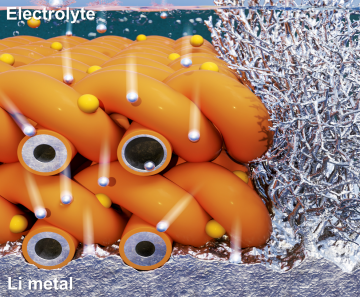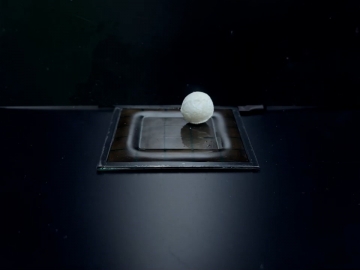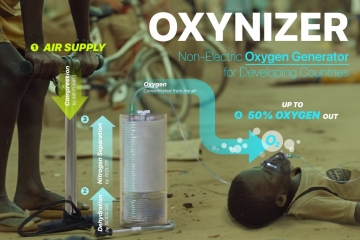KAIST
BREAKTHROUGHS
Research Webzine of the KAIST College of Engineering since 2014
Spring 2025 Vol. 24Microbial production of multiple short-chain primary amines via retrobiosynthesis
Microbial production of multiple short-chain primary amines via retrobiosynthesis
Short-chain primary amines (SCPAs) are industrially important compounds. To achieve sustainable production of SCPAs, the authors report a combination of retrobiosynthesis and a precursor selection step for designing biosynthetic pathways leading to the production of SCPAs, using valine decarboxylase-expressing E. coli strains.
Article | Fall 2021
Nowadays, most of the industrial chemicals used in our daily life are produced by the petroleum-based industry. However, there are several serious issues with the petroleum-based industry such as the depletion of fossil fuel reserves and environmental problems including global warming. To solve these problems, sustainable production of industrial chemicals and materials has been explored with microorganisms as cell factories and renewable non-food biomass as raw material as alternatives to petroleum. Engineering of these microorganisms has become increasingly more efficient and effective with the help of systems metabolic engineering, the practice of engineering the metabolism of a living organism toward the production of a desired metabolite. In this regard, the number of chemicals produced using biomass as a carbon source has substantially increased.
Although the scope of chemicals that are producible using microorganisms continues to expand through advances in systems metabolic engineering, biological production of SCPAs has not yet been reported despite their industrial importance. SCPAs are the chemicals that have an alkyl or aryl group in place of a hydrogen atom in ammonia with carbon chain lengths ranging from C1 to C7. SCPAs have a wide range of applications in chemical industries, for example, as a precursor of pharmaceuticals (e.g., antidiabetic and antihypertensive drugs), agrochemicals (e.g., herbicides, fungicides, and insecticides), solvents, and vulcanization accelerators for rubber and plasticizers. The market size of SCPAs was estimated to be more than 4 billion US dollars in 2014. The main reason why the bio-based production of SCPAs was not yet possible was due to the unknown biosynthetic pathways for SCPAs. Therefore, the team designed synthetic biosynthetic pathways for SCPAs by combining retrobiosynthesis and a precursor selection step. The retrobiosynthesis allowed a systematic design of a biosynthetic pathway for SCPAs by using a set of biochemical reaction rules that describe chemical transformation patterns between substrate and product molecules at an atomic level. These multiple precursors predicted for the possible biosynthesis of each SCPA were sequentially narrowed down by using the precursor selection step for efficient metabolic engineering experiments. The designed pathways were verified by confirming in vivo production of 10 SCPAs by supplying the precursor precursors. Furthermore, the platform Escherichia coli strains were metabolically engineered to produce three proof-of-concept SCPAs from glucose, demonstrating the possibility of bio-based production of diverse SCPAs from renewable resources. This study presents the strategy of systematically designing biosynthetic pathways for the production of a group of related chemicals as demonstrated by multiple SCPAs as examples. “Our research demonstrates the possibility of renewable production of SCPAs for the first time. We are planning to increase the production efficiencies of SCPAs. We believe that our study will play an important role in the development of sustainable and eco-friendly bio-based industries and reorganization of the chemical industry, which are necessary to solve the environmental problems threating survival of humankind” said Distinguished Professor Sang Yup Lee of the Department of Chemical and Biomolecular Engineering, who led the research. This paper titled “Microbial production of multiple short-chain primary amines via retrobiosynthesis” was published in Nature Communications on January 8, 2021. [caption id="attachment_2016" align="aligncenter" width="600"] Figure 1. Biosynthetic reactions constructed in E. coli for the in-vivo production of 12 SCPAs. (Source: Kim et al. "Microbial production of multiple short-chain primary amines via retrobiosynthesis." Nature Communications 12.1 (2021): 1-12)[/caption]
Figure 1. Biosynthetic reactions constructed in E. coli for the in-vivo production of 12 SCPAs. (Source: Kim et al. "Microbial production of multiple short-chain primary amines via retrobiosynthesis." Nature Communications 12.1 (2021): 1-12)[/caption] Most Popular

When and why do graph neural networks become powerful?
Read more
Smart Warnings: LLM-enabled personalized driver assistance
Read more
Extending the lifespan of next-generation lithium metal batteries with water
Read more
Professor Ki-Uk Kyung’s research team develops soft shape-morphing actuator capable of rapid 3D transformations
Read more
Oxynizer: Non-electric oxygen generator for developing countries
Read more